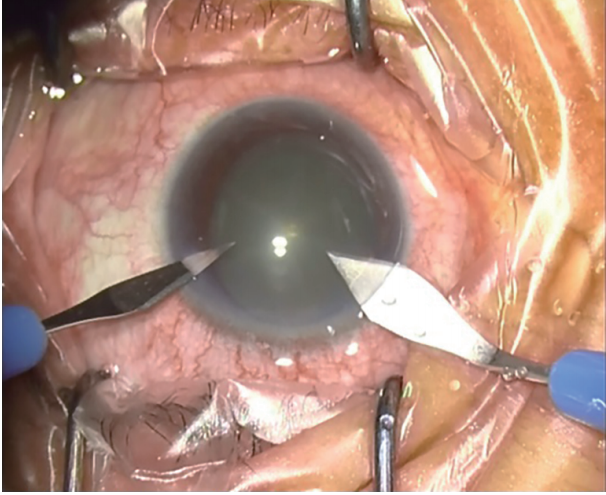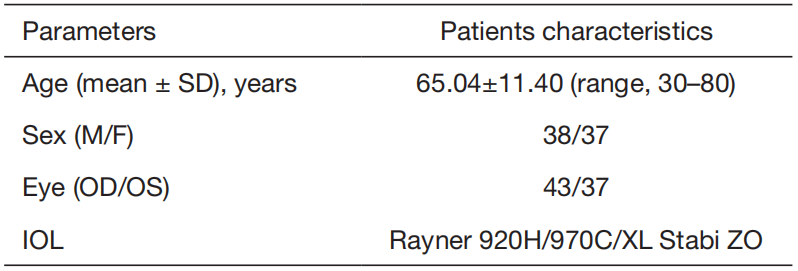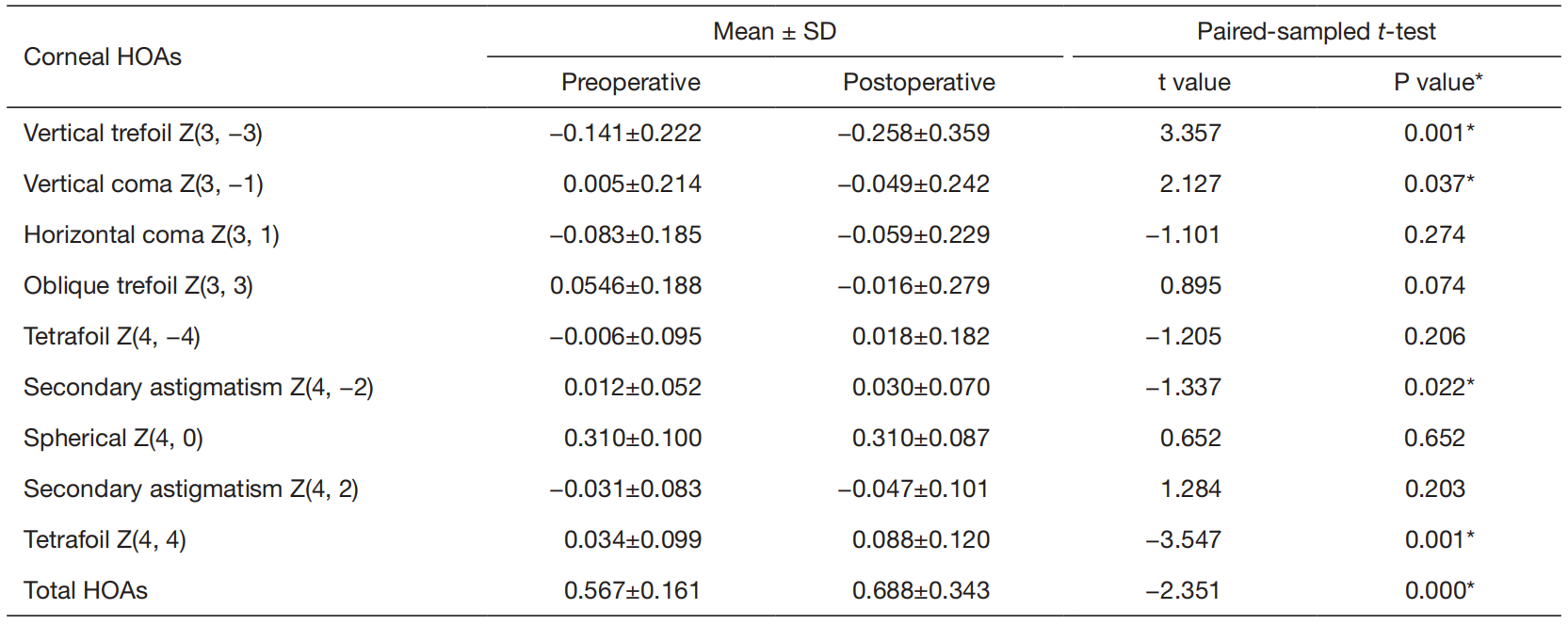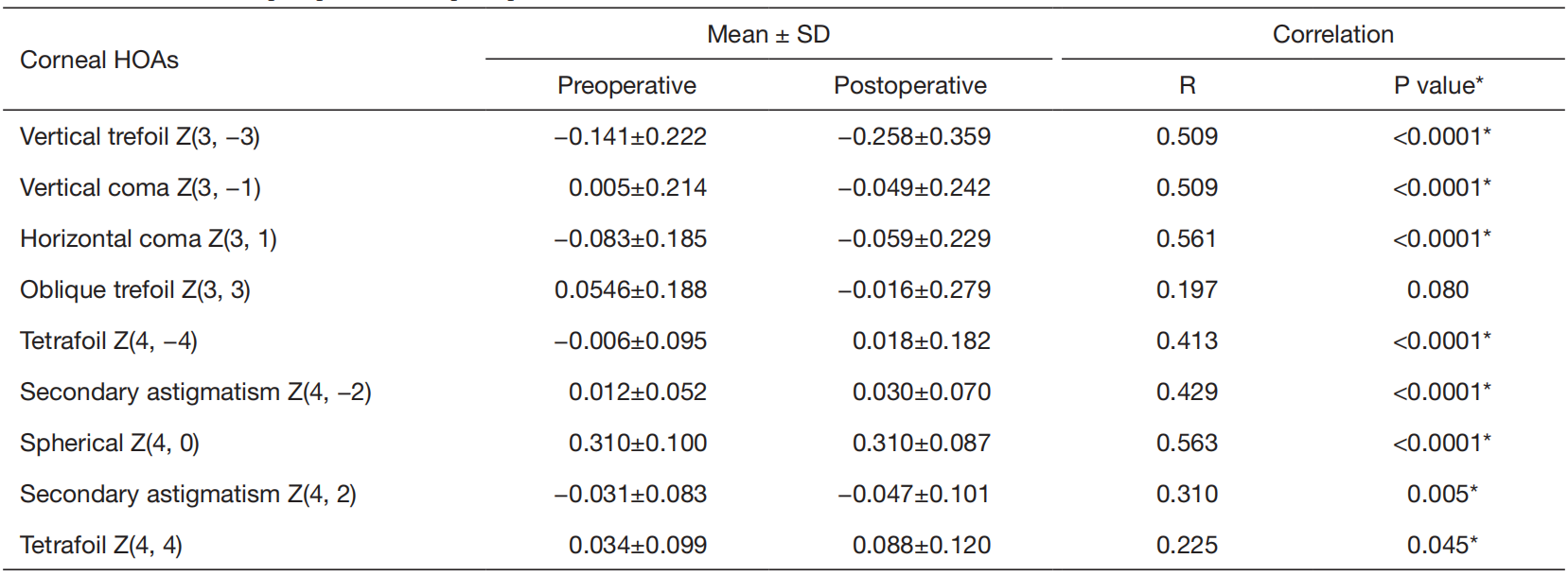1、Song IS, Park JH, Park JH, et al. Corneal coma and trefoil changes associated with incision location in cataract surgery. J Cataract Refract Surg 2015;41:2145-51.
2、Park CY, Chuck RS, Channa P, et al. The effect of corneal anterior surface eccentricity on astigmatism after cataract surgery. Ophthalmic Surg Lasers Imaging 2011;42:408-15.
3、Febbraro JL, Wang L, Borasio E, et al. Astigmatic equivalence of 2.2-mm and 1.8-mm superior clear corneal cataract incision. Graefes Arch Clin Exp Ophthalmol 2015;253:261-5.
4、Maier AK, Gundlach E, Gonnermann J, et al. Superior versus temporal approach in descemet membrane endothelial keratoplasty. Am J Ophthalmol 2015;159:111-7.e1.
5、Yu YB, Zhu YN, Wang W, et al. A comparable study of clinical and optical outcomes after 1.8, 2.0 mm microcoaxial and 3.0 mm coaxial cataract surgery. Int J Ophthalmol 2016;9:399-405
6、Wei YH, Chen WL, Su PY, et al. The influence of corneal wound size on surgically induced corneal astigmatism after phacoemulsification. J Formos Med Assoc 2012;111:284-9.
7、Hidaka Y, Yamaguchi T, Saiki M, et al. Changes in corneal aberrations after cataract surgery. Jpn J Ophthalmol 2016;60:135-41.
8、Gong XH, Zheng QX, Wang N, et al. Visual and optical performance of eyes with different corneal spherical aberration implanted with aspheric intraocular lens. Int J Ophthalmol 2012;5:323-8.
9、Leung TW, Lam AK, Kee CS. Ocular Aberrations and Corneal Shape in Adults with and without Astigmatism.Optom Vis Sci 2015;92:604-14.
10、Villegas EA, Alcón E, Artal P. Impact of positive coupling of the eye's trefoil and coma in retinal image quality and visual acuity. J Opt Soc Am A Opt Image Sci Vis 2012;29:1667-72.
11、Pérez-Merino P, Birkenfeld J, Dorronsoro C, et al. Aberrometry in patients implanted with accommodative intraocular lenses. Am J Ophthalmol 2014;157:1077-89.
12、Pérez-Merino P, Velasco-Ocana M, Martinez-Enriquez E, et al. OCT-based crystalline lens topography in accommodating eyes. Biomed Opt Express 2015;6:5039-54
13、Song IS, Kim MJ, Yoon SY, et al. Higher-order aberrations associated with better near visual acuity in eyes with aspheric monofocal IOLs. J Refract Surg 2014;30:442-6.
14、Chu L, Zhao JY, Zhang JS, et al. Optimal incision sites to reduce corneal aberration variations after small incision phacoemulsification cataract surgery. Int J Ophthalmol
2016;9:540-5.
15、Kim SW, Yang H, Yoon G, et al. Higher-order aberration changes after Implantable Collamer Lens implantation for myopia. Am J Ophthalmol 2011;151:653-662.e1.
16、Hashemi H, Khabazkhoob M, Soroush S, et al. The location of incision in cataract surgery and its impact on induced astigmatism. Curr Opin Ophthalmol 2016;27:58-64.
17、Denoyer A, Ricaud X, Van Went C, et al. Influence of corneal biomechanical properties on surgically induced astigmatism in cataract surgery. J Cataract Refract Surg 2013;39:1204-10.
18、Hayashi K, Yoshida M, Yoshimura K. Effect of steepest�meridian clear corneal incision for reducing preexisting corneal astigmatism using a meridian-marking method or surgeon's intuition. J Cataract Refract Surg 2014;40:2050-6.
19、Eliwa TF, Abdellatif MK, Hamza II. Effect of Limbal Relaxing Incisions on Corneal Aberrations. J Refract Surg 2016;32:156-62.
20、Serrao S, Lombardo G, Schiano-Lomoriello D, et al. Preliminary investigation of corneal wavefront aberration following femtosecond laser clear corneal incision for cataract surgery. Eur J Ophthalmol 2014;24:842-9.








